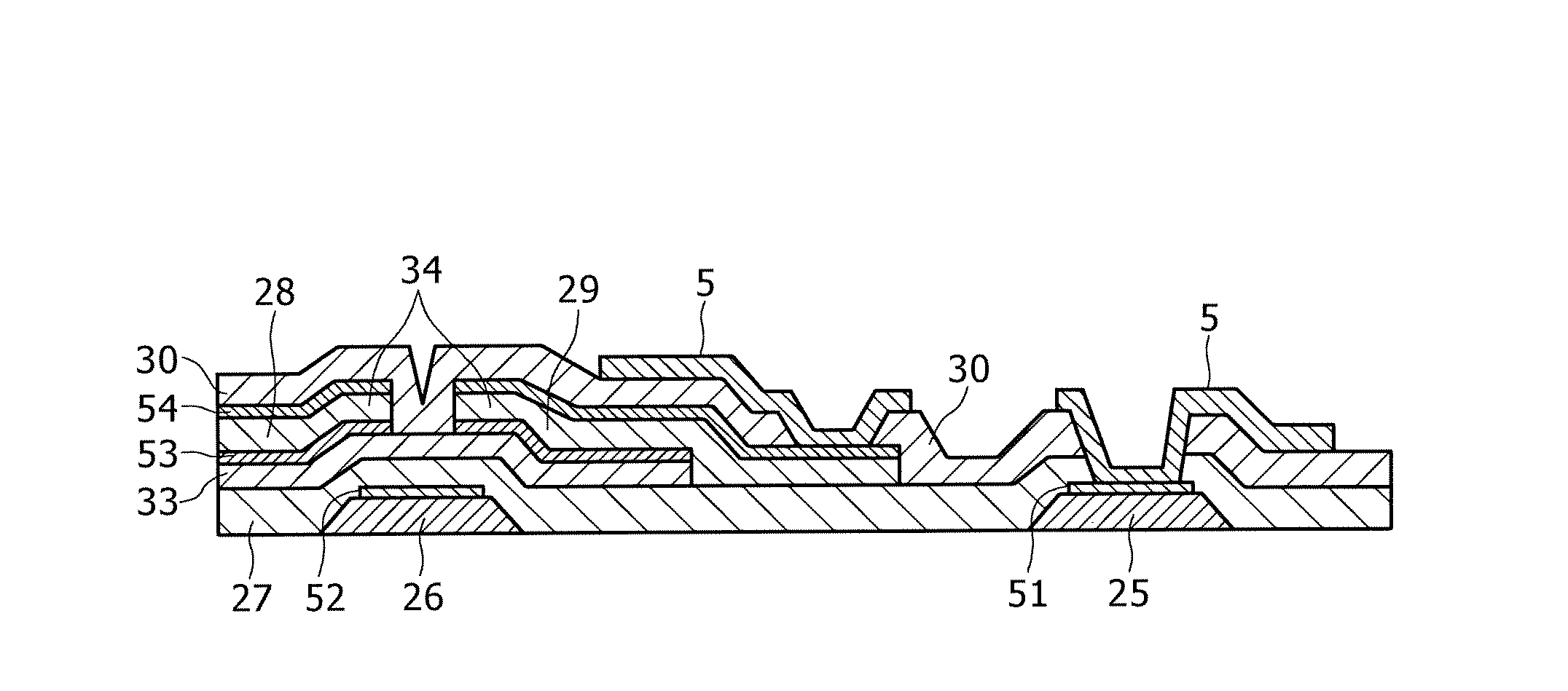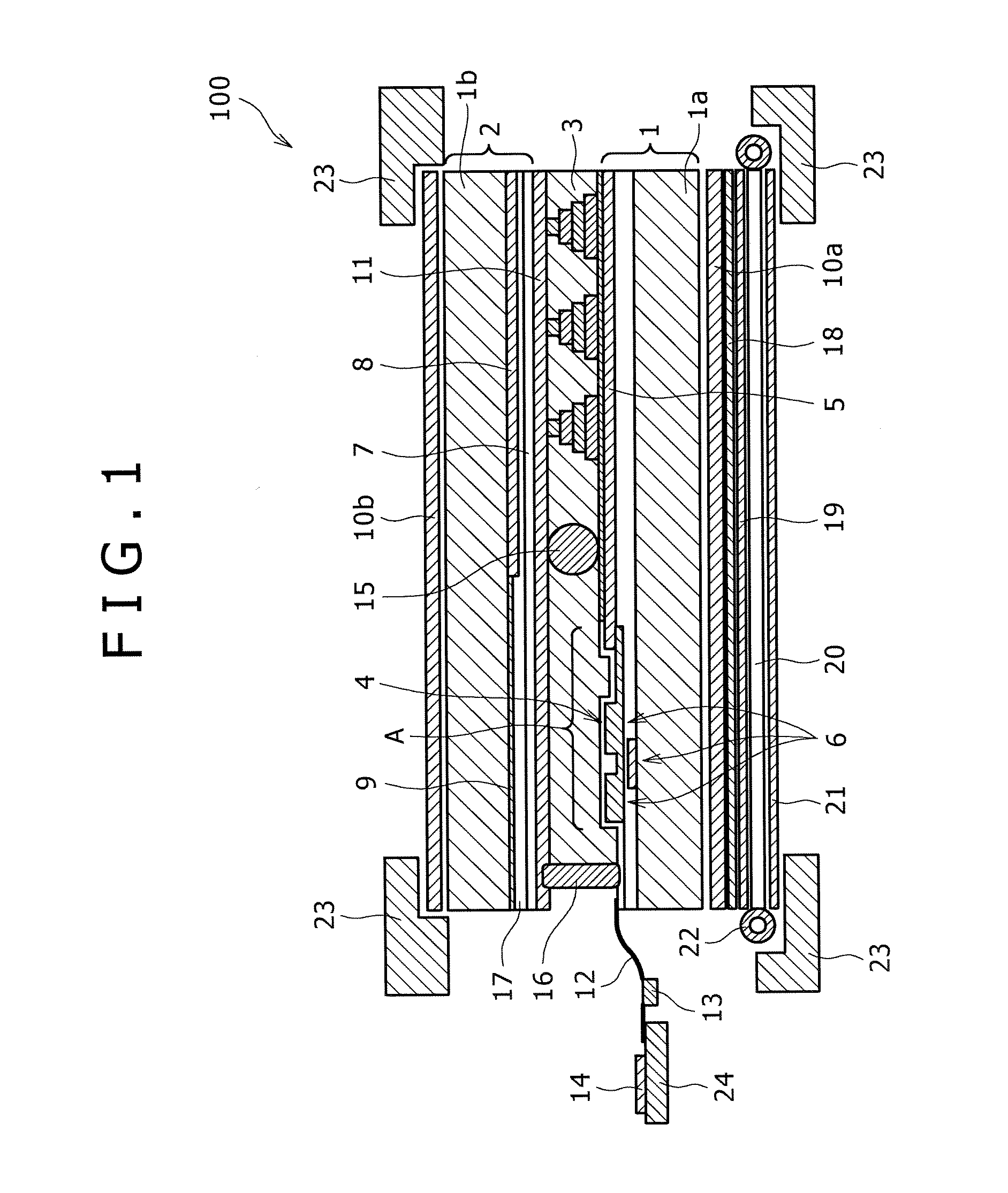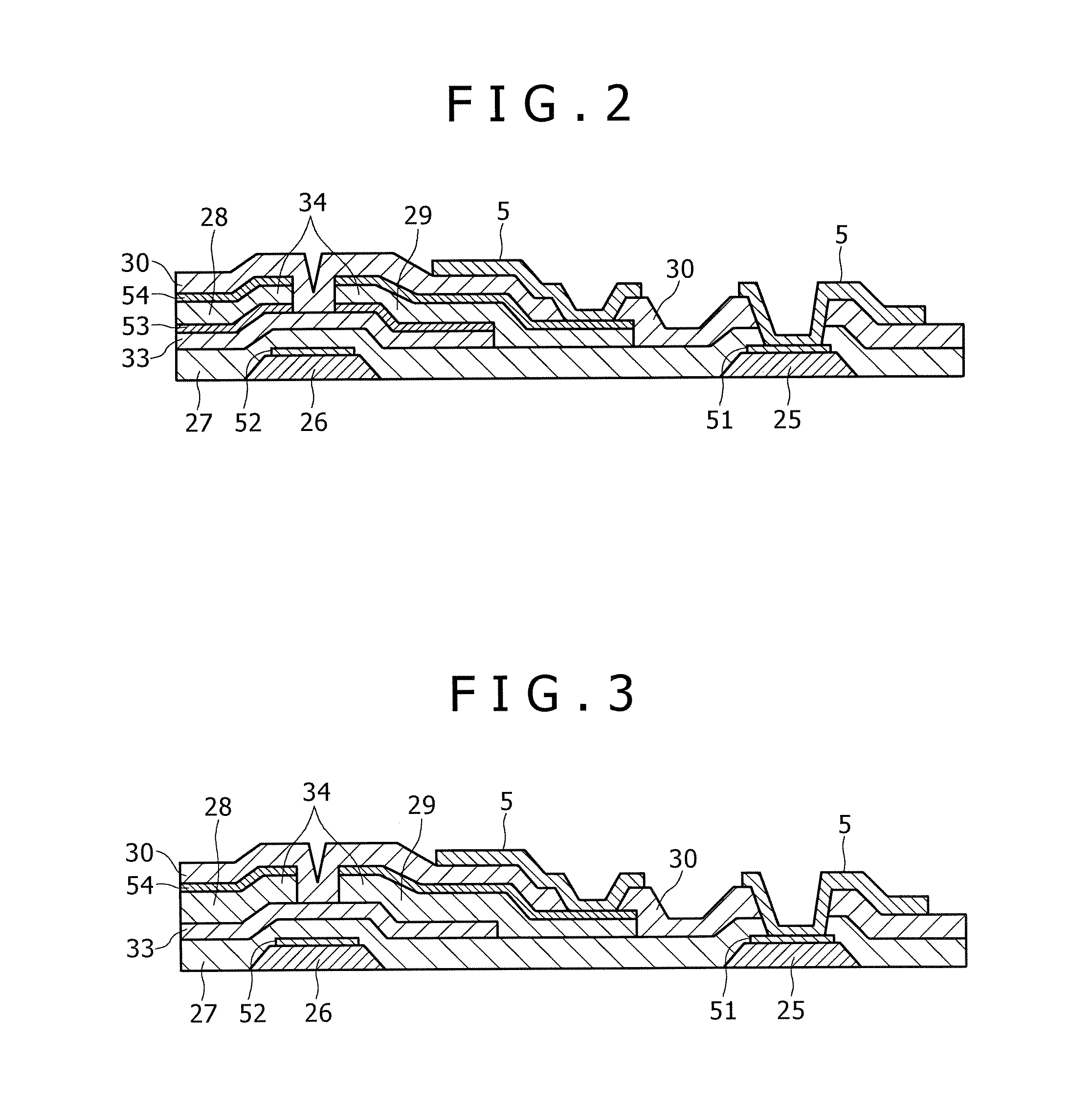Source/drain electrodes, thin-film transistor substrates, manufacture methods thereof, and display devices
a technology of source/drain electrode and substrate, which is applied in the direction of semiconductor devices, semiconductor/solid-state device details, electrical apparatus, etc., can solve the problems of decreased switching speed of thin-film transistor, increased leak current flowing, and reduced on-state current, so as to achieve excellent productivity, good thin-film transistor properties, and excellent thin-film transistor properties.
- Summary
- Abstract
- Description
- Claims
- Application Information
AI Technical Summary
Benefits of technology
Problems solved by technology
Method used
Image
Examples
first embodiment
Source / Drain Electrodes
[0082]The source / drain electrodes according to First Embodiment each comprise a nitrogen-containing layer and an aluminum alloy thin film. The nitrogen-containing layer is arranged so as to cover a thin-film transistor semiconductor layer, and nitrogen (N) of the nitrogen-containing layer binds to silicon of the semiconductor layer. The nitrogen-containing layer acts as a barrier for preventing interdiffusion between aluminum and silicon at the interface between the aluminum alloy thin film and the thin-film transistor semiconductor layer. The source / drain electrodes according to First Embodiment therefore provide excellent thin-film transistor properties without barrier metal layers typically of molybdenum (Mo), in contrast to conventional equivalents, as demonstrated in after-mentioned Experimental Examples. This configuration eliminates the need of an extra film-deposition system for the deposition of barrier metals, because the nitrogen-containing layer ca...
embodiment 1
[0144]Certain preferred embodiments of the thin-film transistor substrates according to the present invention will be illustrated below, with reference to the attached drawings. Such preferred embodiments will be illustrated by taking a liquid crystal display device comprising an amorphous silicon thin-film transistor substrate as a representative example. It is to be noted that the followings are only examples which by no means limit the scope of the present invention, and various changes and modifications are possible therein without departing from the teaching and scope of the present invention. The present inventors have experimentally verified that the source / drain electrodes according to the present invention can also be applied to, for example, reflective electrodes typically for reflective liquid crystal display devices, and TAB connecting electrodes for input and output of signals from or to the outside.
[0145]An embodiment of the amorphous silicon thin-film transistor subst...
experimental examples
[0167]Experiments were conducted in following Experimental Examples 1 to 5 to verify that excellent thin-film transistor properties can be obtained even without barrier metal layers by using source / drain electrodes containing a nitrogen-containing layer as in the present invention. The experimental conditions and determination methods of the properties are as follows.
[0168]Source / Drain Electrodes
[0169]The source / drain electrodes according to Embodiment 1 using Al-2.0 atomic percent Ni alloy were used in Experimental Examples 1 to 4. The source / drain electrodes according to Embodiment 1 were used in Experimental Example 5, except for using pure aluminum instead of the Al-2.0 atomic percent Ni alloy. Experimental Examples 1 to 4 differ from one another only by the formation method of the nitrogen-containing layer for the source / drain electrodes. Specifically, the nitrogen-containing layer was formed by the plasma nitridation process in Experimental Example 1, which process is describe...
PUM
| Property | Measurement | Unit |
|---|---|---|
| thickness | aaaaa | aaaaa |
| thickness | aaaaa | aaaaa |
| thick | aaaaa | aaaaa |
Abstract
Description
Claims
Application Information
 Login to View More
Login to View More - R&D
- Intellectual Property
- Life Sciences
- Materials
- Tech Scout
- Unparalleled Data Quality
- Higher Quality Content
- 60% Fewer Hallucinations
Browse by: Latest US Patents, China's latest patents, Technical Efficacy Thesaurus, Application Domain, Technology Topic, Popular Technical Reports.
© 2025 PatSnap. All rights reserved.Legal|Privacy policy|Modern Slavery Act Transparency Statement|Sitemap|About US| Contact US: help@patsnap.com



